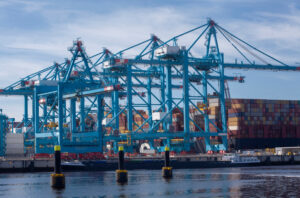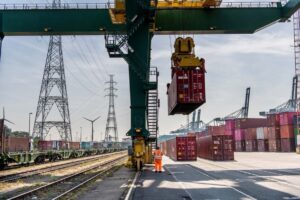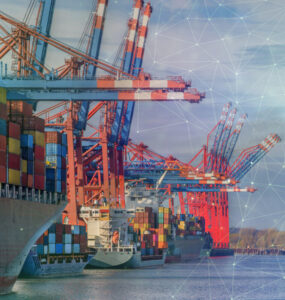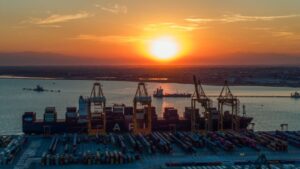The new mega-vessel port in Espírito Santo, Brazil, will build on the nation’s strategy to move away from an “undesired” concentration of port activities in the Brazilian Southeastern axis.
Brazilian ports are facing a transformation process in its infrastructure sector and awaiting the approval of an under-appraisal cabotage bill to improve container distribution across its ports.
‘Undesired reliance’ on southeast ports
Secretary for Competition Advocacy and Competitiveness of Brazilian Ministry of Economy, Geanluca Lorenzon, told PTI that there is “an undesired concentration” of port activities on the Brazilian Southeastern axis, causing access problems and bottlenecks of logistics players in rail and road.
“To address this undesired issue, the Brazilian governments have focused efforts to the expansion of port capacity on the upper (north and northeast) and south portion of the country, given the fact that a large portion of the Brazilian commodities production is located at the upper portion of the country…reducing the logistic costs,” Lorenzon commented.
The Imetame Port will be situated in a region near to important consumer centers, with industrial and mineral activities, and will be connected to the Vitória a Minas Railroad – EFVM, an important logistic railway alternative in the Southeast region.

Logística Porto will also be situated nearby to airport of Vitória, the capital of Espírito Santo State, strengthening the port’s connectivity portfolio.
The Coastal Navigation bill, currently in the Congresso Nacional (Brazilian Senate), will aim to improve conditions for cabotage.
Cabotage (the transportation of goods coastally across a nation’s ports) will accommodate the increasing flows of cargo to major ports such as Santos Port.
Santos Port is Brazil’s premiere container hub, taking a staggering 36% of the nation’s containers and growing its capacity rapidly.
The Brazilian federal government is keen to harness the port’s continuing privatisation and expansion, by developing other regional hubs like that in Espírito Santo to transport goods and shorten supply chains.
The Port, developed by engineering firm Imetame, will be known as ‘Logística Porto’.
Imetame will invest R$1.7 billion ($335 million) in the Port, which will be located at the city of Aracruz, in the State of Espírito Santo.
The new hub will be able to accommodate more than 1 million TEU per year and have a depth of 17m to serve the world’s largest vessels.
Logística Porto, located north of Santos, will join major cabotage ports such as the Manaus-based Port of Pecém to encourage major vessel calls and increase container cabotage flows from Santos.
Cabotage & intermodal
The cabotage bill, under the Ministry of Infrastructure (MINFRA) BR do Mar banner, will reduce reliance on trucks to transport containers from southeastern container strongholds in Santos and Paranaguá.
“[The] bill is seen as a great contribution to the costal navigation (cabotage) sector and, hence, the container industry,” Lorenzon said.
The Brazilian industry currently suffers from an underdeveloped rail-port which increases the nation’s reliance on trucking and makes it harder to cut emissions and encourage competition.
Another bill under appraisal in Congresso Nacional, the Rail Bill, “is supposed to foster private investments in the rail industry,” Lorenzon continued, under a new flexible grant format.
The new grant will encourage private investment for intermodal infrastructure like those at Vitória a Minas Railroad, improving inland transport links.
“This more flexible grant format is supposed to foster new rail investments, especially those required to the connection of logistic structures, such as ports and industries,” Lorenzon said.
“The Ministry of Economy envisage a great opportunity for the private investment to provide the required rail link to the proposed port.”
Port commercialisation
The development of the port is part of a national intention to harness a “great opportunity” for containers through Brazil’s increasingly privatised port sector, argued Lorenzon.
The government targets its ports sector to “foster the environment” for private investment through the Brazilian Terminals Port Grant Program.
More recently, it has been launched the Public Port Concession Program with the public Codesa Company, focused on the concession of public ports.
“Among the aforementioned investments, there are dredging services (performed in partnership with the public port state companies), to allow the operation of larger vessels,” Lorenzon outlined.
The Ministry argued that the move towards privation “ultimately might contribute” to global shipping lines to see Brazil as a staple shipping route for its cargo.
“In this scenario, besides following the world trend of increasing container volumes at maritime commerce, Brazil has a great opportunity to increase the container share in the national context, through the switch from the road to the maritime mode, for national commerce,” Lorenzon noted.









